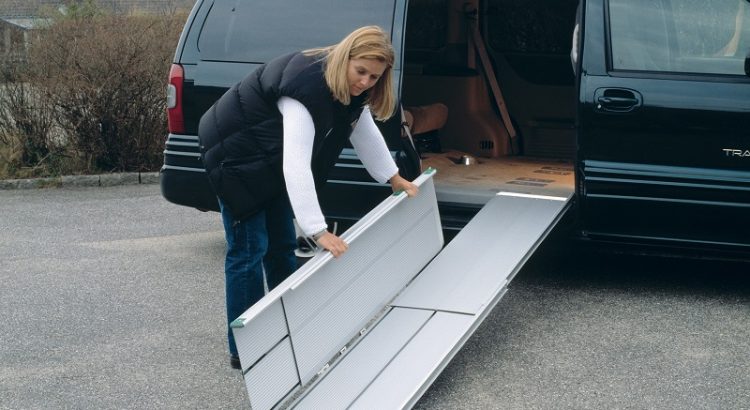A bearing effectively extends the total length of the ramp. If the installation of an intermediate level has the consequence of increasing the slope of the ramp, it is necessary to take into account what is most advantageous in the situation considered: a gentler slope or an intermediate level.
Coating
Coatings for exterior ramps: bituminous coating, structured concrete, interlocking jointed pavements, artificial stone paving or washed concrete with a coarse structure. According to the recommendations of the manufacturers: list of requirements:
- Covered ramp with a slope of up to 6%: coating class GS2 (R11)
- Uncovered ramp with a slope of up to 6%: GS3 coating (R 12)
- Covered ramp with a slope of more than 6%: coating class GS3 (R 12)
- Uncovered ramp with a slope of more than 6%: coating class GS4 (R 13)
Coatings for interior ramp: bituminous coating floated concrete, non-slip tiling. According to the recommendations: list of requirements:
- With a slope of up to 6%: coating class GS2 (R11)
- Ramp covered with a slope of more than 6%: coating class GS3 ( R 12)
For tile coverings, it is recommended to establish a cleaning concept.
Security
The space under the mobility123 ramp is considered as an obstacle in space, as soon as its lower edge decreases the useful height to less than 2.10 m The underside of the ramp must then be secured to prevent someone from passing: the setting a barrier is required from a height of 0.30 m. This also applies to inclined moving walkways.
If the risk of falling is max: 0.40 m, provide a safety device such as a barrier, guardrail or handrail with a base. If the level difference is max: 1.00 m and the width of the ramp of min. 1.80 m, it is possible to provide a high border of min. 0.10 m instead of a barrier or a wall.
Recommendation
According to the standard, handrails are only required on ramps with a slope of more than 6%. The Center recommends mounting a handrail on all ramps, at least on one side, preferably on both sides, and to combine them with a raised edge or a cross member located at max. 0.30 m from the ground, in such a way that the handrail (s) serves to prevent falls along the entire length of the ramp.
Baffles
Fixed baffle elements, offset and perpendicular to the direction of movement must, according to the SIA 500 standard, guarantee minimum distances between elements, in order to allow passage. As the baffles are mainly located outside, the requirements according to “Obstacle-free circulation space” must also be taken into account. According to this standard, baffles are to be avoided.
How should we treat jumps?
For small differences in level, we speak of a jump. They can be treated with a rounded edge or chamfer up to 2cm high. Then up to 4cm, the chamfer must not exceed 33% slope. Beyond 4cm, the regulations on the ramps apply.
Is the installation of a doorbell compulsory?
Who says “removable ramp” says intervention of a third party to put it in place. This is why the regulations require the installation of a call bell. People with reduced mobility must be able to identify themselves to reception staff. It is also a good way to communicate about the accessibility of your establishment!





